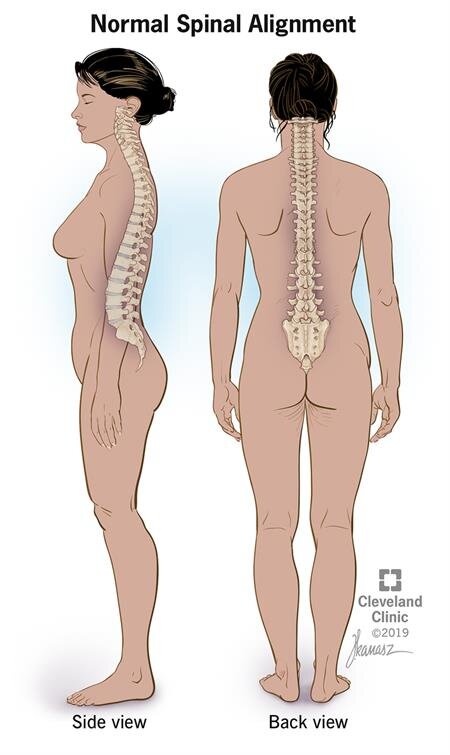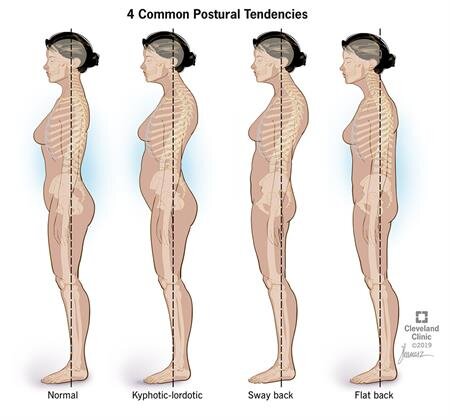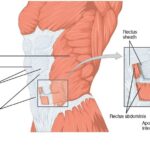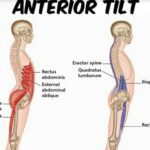Standing desks are gaining in popularity due to the increased understanding that sitting for extended periods of time can cause a variety of issues from back pain to poor circulation. So, the question is, do standing desks help to resolve these problems or do they cause their own set of issues?
Our bodies were not made to be in any one position for prolonged periods of time. So just as sitting too long can strain the body, so can standing for long periods of time. Poor posture can exacerbate this stress. Unfortunately, all those standing desks don’t come with instructions for correct standing posture. So, here are some simple steps you can use to reduce the stress of prolonged standing on your body.
Keeping soft knees
Correct posture is the proper alignment of the bones and joints, reducing the amount of strain placed on your muscles, especially the stabilizing muscles. The most common standing misalignment I see as a massage therapist is in the knees. Majority of people tend to “lock” their knees while standing. To test if you are locking your knees stand how you normally would with both feet flat on the floor. Then try to straighten your legs even more by pushing your knees backwards. If your knees cannot go any farther than they already are, then you are most likely locking your knees. Now, gently push your knees slowly forward as if you are going to sit down. Within the first centimeter of movement you should feel a slight release in the knee joint. When this happens, you should also feel a mild downward tilt of your tail bone, along with a slight activation of your quadricep and core muscles. This is correct alignment of your knee joint while standing, also referred to as ‘soft knees’. There is no need to push the knees any more forward making you feel like you are constantly a little squatted.
So, why is unlocking your knees important? Having your knees locked causes the curve of the lower back to become exaggerated. This puts stress on your spine, over contracting the spinal erectors and other muscles of the low back, increasing pain in the area, as well as making it more difficult to engage your core muscles. We have all heard to reduce back problems and have proper posture we need to have a strong core. This is great advice although meaningless if you don’t actually use your core. With your knees locked the muscles of the abdomen become stretched making it difficult to engage or contract them. Loose abdominal muscles can result in the organs and possible excess adipose tissue in the area to shifting forward leading to more weight pulling the curve of the lower back even further forward.
Other postural adjustments
Just like with sitting, shoulders should be gently pulled back and down away from the ears. Place your computer screen at eye level to avoid prolonged unnatural tilt of the head. If reading, consider getting a book stand to place on top of your desk to keep yourself from hunching over the book. Keep ears, shoulders and hips in a straight vertical line.
A simple way to remember correct standing posture is up the front, down the back:
-Soft knees
-Stomach pulled in
-Chest lifted
-Chin lifted
-Shoulders back and down
-Tailbone tucked under
![[1]](https://images.squarespace-cdn.com/content/v1/568c1797df40f37b331c4d04/1581095908108-5YKDJWS8QSKYFAC0XGKQ/ShowImage2.ashx.jpg)

At Phila Massages, your therapist will be able to help you go over proper standing posture and give you other self-care advice to keep healthy!
Read our related article on Sitting posture here:
Proper posture at the office desk
Image References:
Reference:
- https://familydoctor.org/condition/low-back-pain/
- https://www.drroysclinic.com/blog-details/are-you-standing-the-right-way/
- https://www.runnersworldonline.com.au/correct-your-posture/
- https://www.sportsrec.com/5300121/proper-posture-when-standing-and-sitting







